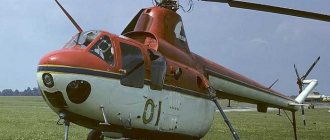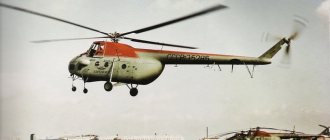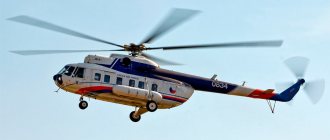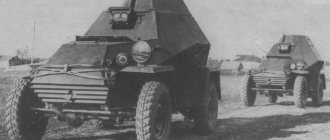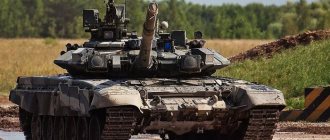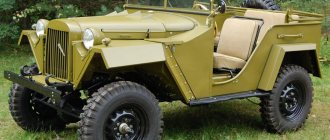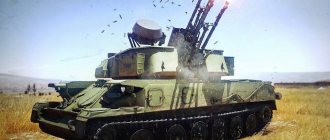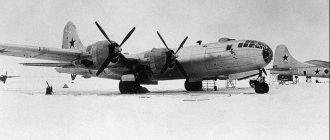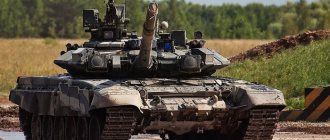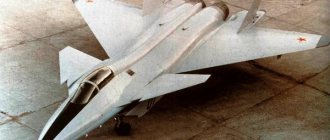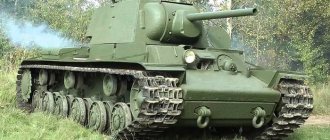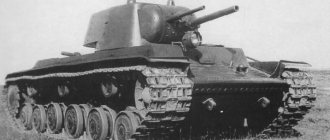As history shows, the authorship of many important inventions is not easy or even impossible to establish. After all, the same ideas can arise among people separated by centuries or thousands of kilometers. The same is true regarding the question of who invented the first helicopter, since we know about many talented scientists, engineers and designers who proposed various concepts for creating vertical take-off aircraft.
Background
It is quite difficult to say exactly in what year the helicopter was invented, since it is difficult to determine the starting point. If we talk about the idea of a device that rises vertically from the top thanks to a rotating screw, then the oldest written mention of such an object is more than 1600 years old. It was a small children's toy in the form of a stick with a screw at the end, which was held between the palms, rotated and released, after which it briefly flew up. No practical application for this invention was found then, and it was forgotten for a long time.
Fairey Jet Gyrodyne
0
The jet Gyrodyne is a rather interesting combination of a helicopter and a gyroplane. To use the rotor jet system, Fairey equipped its helicopter with jet burner nozzles at the tips of the two-blade rotor blades, into which fuel was injected. This system was not unique among experimental helicopters, but after lifting and gaining speed, the thrust on the main rotor slowly decreased, after which the rotor switched to autorotation mode. The thrust was supplied to two pusher screws.
M. Lomonosov
After 270 years, the mechanism, which with a stretch can be called the prototype of a mini-helicopter, was invented in Russia. Its author was Mikhail Lomonosov, who decided to create a device capable of raising thermometers and other instruments necessary for meteorological research to great heights. It is known that a model was even made that was launched from a spring mechanism, but its tests were not successful. Be that as it may, although there is no reason to believe that M. Lomonosov was the first to invent a helicopter, the principle he invented for damping the reaction torque on rotorcraft is still used today and is considered a generally recognized classic.
First vertical flight
In 1860, in France, G. Ponton d'Amécourt created an aeronef aircraft, which had two coaxial propellers and was equipped with a steam engine. His tests were not successful, and the machine was never able to achieve vertical ascent as its inventor had hoped.
The situation changed with the advent of gasoline engines, which were more powerful and weighed less than steam engines. On September 29, 1907, the first vertical flight in history took place. It was carried out by the unmanned Gyroplane, built by Louis and Jacques Breguet with the theoretical support of Professor C. Richet. It lasted less than a minute. At the same time, the machine was only able to lift itself off the ground by 50 cm. Despite the success, most experts believe that when answering the question of who invented the helicopter, one cannot name the names of the creators of the Gyroplane, since its flight was not controlled, and the device itself was not the moment of lifting was on a leash.
Further history of the invention of the helicopter
For several years, designers and engineers were unable to solve the problem of controlling such aircraft. The turning point occurred in 1911, when B. N. Yuryev became the one who invented the helicopter with a tail rotor. The mechanism of the latter is used in the construction of aircraft to this day.
In 1922, Professor G. Botezat, who emigrated from Russia to the USA after the revolution, built the world's first steadily controlled helicopter at the request of the American army. However, having risen into the air to a height of 5 m, he was able to remain in flight for only a few minutes.
De Lackner HZ-1
0
As helicopters have become an essential part of military strategy, armies have begun to look for new ways to apply this technology. One of the most unusual projects was a flying platform created in 1954, designed to transport one soldier. The Lackner HZ-1 was equipped with a small 40 hp engine, which rotated two propellers, above which there was a small platform for one person. In essence, the HZ-1 became a kind of flying Segway sixty years ago. The maximum speed of the device was 105-110 kilometers per hour.
Advances in the helicopter industry
In subsequent years, several records were set for the duration and range of flights. Among them are:
- the record of Argentinean Raul Pateras Pescara, who covered a distance of 736 m in a helicopter of his own design;
- the longest flight at that time (1924) lasting 7 minutes 40 seconds, made by the Frenchman E. Emichen;
- the record of the Italian helicopter D'Ascanio, which covered a distance of over 1 km in 1930;
- speed record (100 km/h), set in 1935 by the Gyroplane aircraft.
Sikorsky X2
0
One of the biggest disadvantages of helicopters is their low speed, which is much inferior to the speed of airplanes. In 2008, Sikorsky built an experimental coaxial helicopter with a pusher propeller, which was supposed to reach speeds of up to 500 km/h. In it, engineers abandoned the standard helicopter design. The two four-bladed main rotors rotated in opposite directions, which in itself is not very unique. But instead of a conventional tail rotor, a six-blade tail pusher propeller was installed. The X2 was never intended for mass production, but it proved to be a highly successful demonstration of new technologies. In 2011, the program was curtailed, and the S-97 Raider military helicopter was built based on proven new technologies.
Who invented the first helicopter in the world?
It is believed that in answer to this question the name of the aircraft designer Igor Ivanovich Sikorsky should be mentioned. Long before the invention of his main creation - the world's first production helicopter - he created the most advanced 4-engine aircraft at that time, the Russian Knight. In addition, he also took the lead in the design of transatlantic seaplanes.
Back in 1931, Sikorsky patented a design for a flying machine, the design of which was fundamentally not much different from the helicopter models used today. In particular, he proposed using 2 propellers: the main one on the roof and the auxiliary one on the tail.
Sikorsky's first experimental helicopter, the VS-300, flown by himself, took to the skies in September 1939. It was a large-diameter steel pipe with an open cockpit for the pilot. The aircraft had a power of 65 hp. With. and was powered by a Lycoming engine driving a 3-blade main rotor.
"Flying White Guard"
"Maxim Gorky": the death of a giant
The story of the tragedy, the causes of which remained secret for 75 years
Sikorsky had an offer from the French, who wanted to start producing large bombers. The contract was signed, but it didn’t come to actual production - the war was over. Then the aircraft designer headed to America, the only country whose economy in those years was capable of developing heavy aviation.
However, the New World did not receive the designer very kindly. American generals underestimated the role of aviation in future wars, and no one really expected wars after the Treaty of Versailles. Sikorsky was forced to go teach mathematics at a school for Russian emigrants, which was maintained by a charitable foundation. Sometimes he managed to give lectures on aircraft construction. He did not know English particularly well, so he communicated mainly in the Russian environment.
But one day there was a knock on the door of his small room in Manhattan. On the threshold of the table is a group of Russian emigrants - former pilots, sailors, engineers, mechanics. They expressed their readiness to implement his design ideas for free, and in fact chose him as their leader and leader. Igor Ivanovich could not refuse his comrades.
Sikorsky_3
Frame of the S-29-A aircraft at the Utgof farm
Photo: alternathistory.com
What to fly towards the century
Domestic civil aviation celebrates its 95th anniversary
Work began in a chicken coop on Long Island that belonged to Sikorsky's Marine Corps comrade, Victor Utgof. A combat pilot, holder of the Order of St. George and the Legion of Honor, he ended up in the United States even before the revolution as a military attaché at the embassy. Then he managed to get a job as a pilot in the Coast Guard and rent a small farm, where the work of the “Russian company” was carried out, which received the official name Sikorsky Manufacturing Company (“Sikorsky Manufacturing Company”).
They worked in the evenings and on weekends, parts were bought together or looked for in landfills. Everything was used, for example, the wing spars were made from corners from found old beds... But there was still not enough money for complex parts and it was not possible to complete the car. And then one day a tall, well-dressed gentleman came to the chicken coop, walked around the plane for a long time and silently watched what was happening. Sikorsky recognized him as the great Russian composer Sergei Rachmaninov. It turned out that he had heard about the disasters of the “Russian company” and decided to help the famous designer. Rachmaninov said that they would completely trust him, and immediately wrote a check for $5 thousand - about 70 thousand in today's money.
Sikorsky_2
Sikorsky (in the center, in a jacket with a belt) among the workers and engineers who took part in the construction of S-29-A
Photo: alternathistory.com
On the way to a record
The story of the non-stop flight of Valery Chkalov, Georgy Baidukov and Alexander Belyakov, which opened a new page in the development of aviation
The twin-engine S-29-A (“A” in the name meant “American”) took to the air in 1924, and soon it was already fulfilling an order to transport a piano to the White House for the wife of the US President. It was the largest aircraft in America, demonstrating the capabilities of “Russian” technology. Unfortunately, there were no buyers for it, and it remained in a single copy - but in 1929 he starred in a movie, playing the role of a German "Gotha" during the First World War in the famous Howard Hughes film "Hell's Angels." The real breakthrough was made by the S-38, an eight-seat “flying boat” produced in more than 100 copies - both for military and civilian customers. This was the first truly mass-produced aircraft designed by Sikorsky. The choice of the amphibious type was explained by the fact that in the 1920s and 1930s there were not so many airfields suitable for heavy aviation, even in developed countries - but vast expanses of water, allowing for a long run-up and a relatively soft landing, existed thanks to nature almost everywhere.
Two wings on the shoulders: how an air hooligan became a “Stalinist falcon”
Did Valery Chkalov fly under the Trinity Bridge?
One of Sikorsky's most famous "flying boats" was the S-42, a four-engine transcontinental airliner known as the "flying clipper." This amazingly reliable, comfortable and beautiful aircraft was created in 1931 by order of Pan American and set 10 world records for carrying capacity. The “Flying Clipper” accommodated 37 passengers in a “sit-down” cabin configuration or 14 in a version with sleeping cabins. Sikorsky's "Russian Firm" (now called Sikorsky Aero Engineering Corporation) assembled its aircraft at a plant in Stratford, Connecticut. It was mainly worked by Russian emigrants, who from all over America came under the wing of Igor Ivanovich. Interestingly, the main language at the enterprise was Russian, and American engineers even had to master basic terms and expressions in order to communicate with workers. A real Russian colony was formed in Stratford, where it had its own schools, church and clubs, and the newspaper “Resurrection of Russia” was published. The Voice of Russian Monarchical Thought." Sikorsky remained a patriot of Russia, a connoisseur and popularizer of Russian culture. “We need to work, and most importantly, learn what will help us restore our Motherland when it demands it of us,” he wrote in one of the articles.
Sikorsky_4
"Flying boat" S-42 during takeoff
Photo: commons.wikimedia.org
The success of Sikorsky and his team aroused jealousy in the USSR to the point of hatred. One Kyiv newspaper in the early 1930s even published an article under the loud title “Flying White Guards.” Despite this, in 1935, a Soviet delegation came to Stratford, headed by the famous aircraft designer Andrei Tupolev, who had the official goal of buying a license for the production of Sikorsky aircraft and the unofficial goal of inviting the designer himself to return to his homeland. Sikorsky listened to Tupolev, but did not answer. Meanwhile, its workers and engineers gave a great hand to the “reds” who dared to come to their corner of old Russia. The American police even opened a case later.
Academician and hero: Sergei Ilyushin and his planes
The great aircraft designer loved frugality
Further successes of Sikorsky
In mid-spring 1941, the aircraft designer staged a presentation of the world's first amphibious helicopter on a float landing gear, which was a modification of the already famous VS-300 aircraft at that time. The rotorcraft took off from the surface of the water and successfully landed on land. The duration of its flight was 1 hour 35 minutes, and the speed reached 100 km per hour.
Subsequently, the aircraft designer created 18 types of helicopters, which began to be mass-produced. In addition, he designed turbine models, amphibians with retractable landing gear, as well as so-called flying cranes. Helicopters created by Sikorsky were used for transatlantic and transpacific flights with in-flight refueling. Egi machines were used for a wide variety of purposes. Sikorsky completed his career before retiring with the creation of the S-58 helicopter, rightfully considered the best helicopter of the 1st generation.
Now you know why it is generally accepted that Igor Sikorsky invented the first helicopter. At the same time, one cannot diminish the merits of other engineers and designers who devoted many years of their lives to the creation and improvement of rotary-wing aircraft.
Kellett-Hughes XH-17
0
One of the most common types of helicopters is flying cranes, which can lift heavy and oversized loads to heights inaccessible to conventional cranes. In 1952, Hughes Aircraft Company developed its first helicopter, the XH-17, which at the time was the largest helicopter in the world: it was equipped with a 39.6 m diameter rotor and two General Electric J35 turbojet engines that served as blowers to the combustion chambers at the tips of the blades. . Unlike the Percival P.74, hot air mixed with fuel and then ignited. This means that the XN-17 actually had small jet engines at the end of the rotor blades. To cut costs, Hughes used parts from various World War II aircraft: the cockpit was taken from a CG-15, the landing gear was from a B-25 bomber, and the large fuel tank was from a B-29 bomber. During testing, the XH-17 turned out to be a terrifying sight: flames shooting from the jet engine nozzles at the tips of the blades, and the sound from the constant combustion of fuel in the chambers on the blades sounded like 1,000 artillery pieces firing simultaneously (according to a newspaper article). The sound of the XH-17 taking off was clearly audible at a distance of 13 kilometers. The efficiency of the unit turned out to be dismal.
